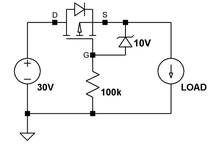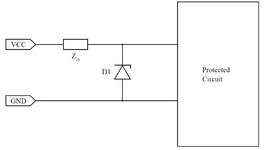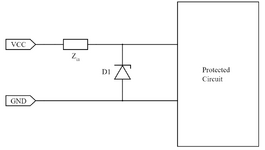engr_joni_ee
Advanced Member level 3
Hi, I have attached a circuit for peverse voltage and over voltage protection that include a P-FET and a zener diode. I have seen it in many power supply circuits but I think there is a voltage drop which the FET is ON between drain and source, right ? If the voltage drop is 1 V across the FET wheh FET is ON and the load will have smaller voltage. How to compensate this voltage drop ? Is there any other circuit that provide same voltage at the load ? How about just using one shotkey diode in reverse bias and no FET ?


